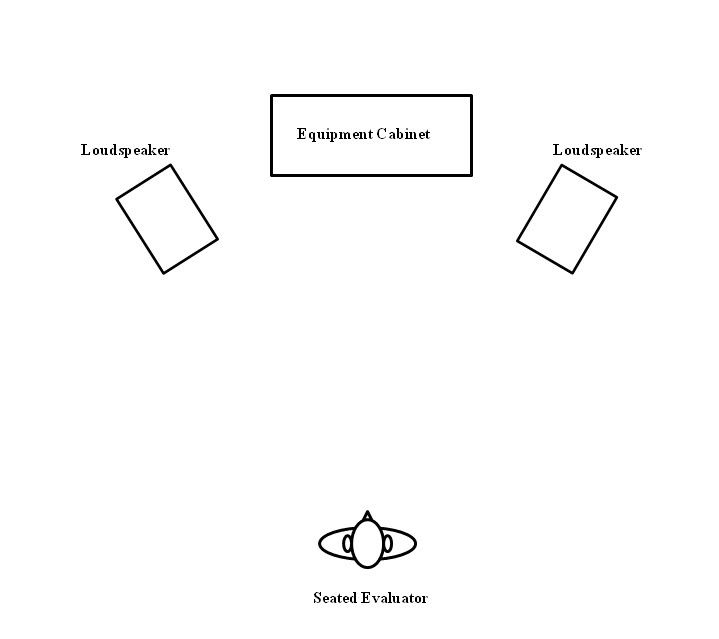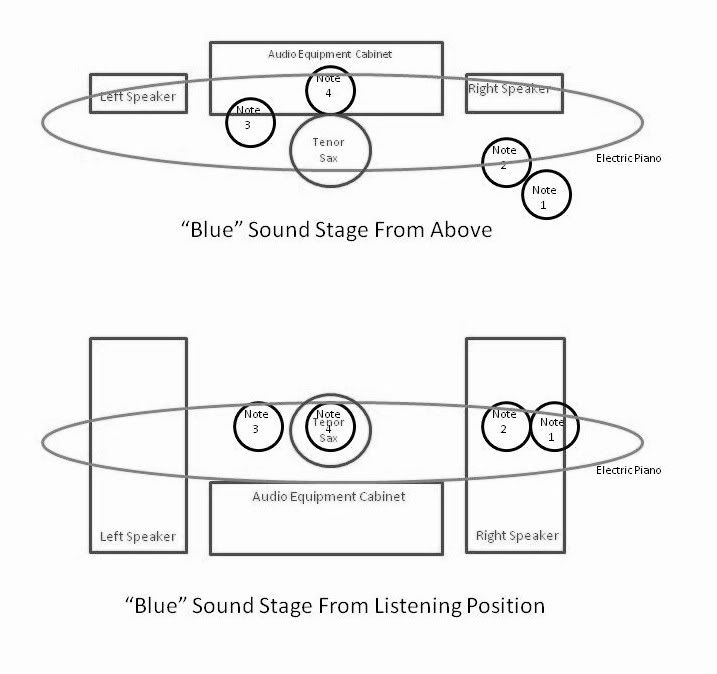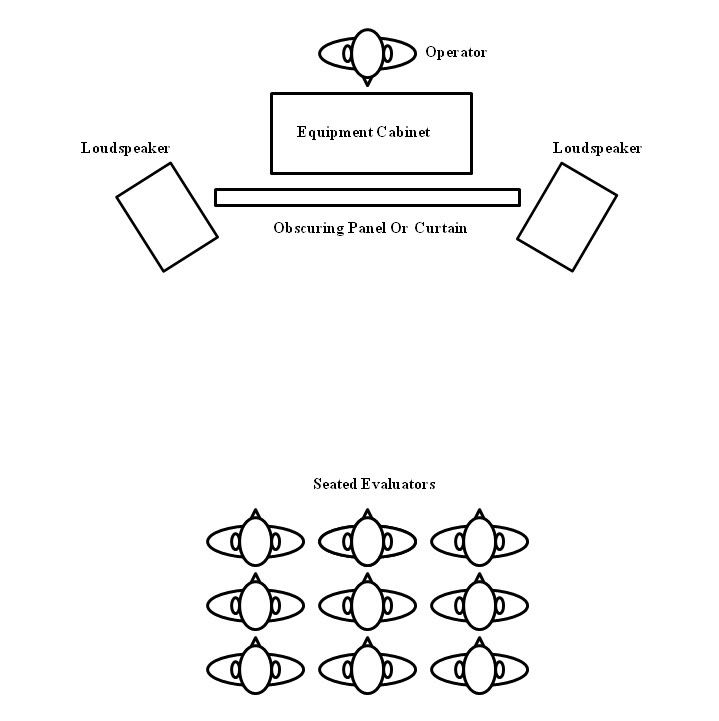查看投票結果: 您的音響室做過測量嗎?
- 投票者
- 154. 您不可以參加此投票
-
做過很多次 (3次以上)
-
做過1~3次
-
目前沒做過,以後想要做
-
沒做過,暫時也沒想要做
-
2010-09-15, 07:26 PM
#371

A DESCRIPTIVE EVALUATION METHODOLOGY FOR CONSUMER AUDIO EQUIPMENT
http://onlinelibrary.wiley.com/doi/1...306.x/abstract
-
-
2010-09-15, 07:34 PM
#372

Introduction
In March of this year, I conducted a scientific investigation to assess the validity of the ABX test for audio evaluation. During the course of that investigation, I was able to obtain a better understanding of a proper methodology for audio equipment evaluation. I was encouraged to submit my findings to a scientific journal for review and publication. There were several publication options available. I chose to submit my results to the Journal of Sensory Studies (JOSS), which is the premier peer-reviewed international sensory science journal. The Journal of Sensory Studies is also the official peer-reviewed journal of the Society of Sensory Professionals. An overview of JOSS can be read here: JOSS Overview.
Journal Paper Publication Acceptance
I have received notice that my 16-page manuscript, entitled "A Descriptive Evaluation Methodology For Consumer Audio Equipment", has been accepted for publication after rigorous peer review. The abstract, evaluation methodology summary and conclusion sections are as follows (all quoted text (in blue) and figures are © 2010 Wiley Periodicals, Inc.):
Abstract
"A pilot study was conducted in order to investigate the application of descriptive analysis techniques to the evaluation of consumer audio equipment. A global seven-step methodology for the descriptive evaluation of the sound characteristics of consumer audio equipment was developed. In contrast to the commonly used forced choice discrimination methods for audio equipment evaluation, the proposed methodology enhances, rather than compromises, a subject’s sensory input. A case study employing a minimally trained subject demonstrated the applicability of sensory evaluation techniques to sound. There has been some resistance in the audio community to the adoption of sensory science evaluation methods because such methods are erroneously thought to apply only to products that affect the senses of touch, taste, smell and sight.
Evaluation Methodology Summary
"The basic framework for the seven-step descriptive evaluation method for audio equipment comprises:
1. Evaluator sense organ assessment.
2. Evaluator training.
3. Evaluator experience.
4. Proper equipment setup, speaker placement and selection of
the optimum evaluator listening location (stereo sweet spot).
5. A quiet, comfortable and “acoustically friendly” listening
room, preferably with the capability of dimming the lights.
6. Careful listening, in the stereo sweet spot with familiar,
well-recorded music.
7. “Sound stage mapping” where the location of sounds (images)
within the sound stage and the attributes of those sounds are
carefully documented."
Conclusion
"This pilot study demonstrated that the descriptive analysis method for audio equipment evaluation is a sensitive, accurate, elegant, portable and easy to learn protocol. In stark contrast to the widely used forced choice discrimination evaluation methods, the protocol proposed in this paper is administered under realistic, non-stressful conditions and it maximizes and optimizes the amount of aural and tactile information received by the subject. The case study results emphasize the need for further study in audio evaluation with a fully trained descriptive analysis panel. Formal descriptive analysis would require evaluative panel members with training in descriptive techniques, adequate hearing ability, adequate full body tactile response, an extensive memory in real musical and vocal sounds, competence in setting up a moderate to high resolution audio system in an acoustically appropriate room and competence in documenting what is heard and felt."
Sample Figures
 Figure 1. Audio test arrangement for descriptive method for stereophonic audio evaluation. © 2010 Wiley Periodicals, Inc.
Figure 1. Audio test arrangement for descriptive method for stereophonic audio evaluation. © 2010 Wiley Periodicals, Inc.
 Figure 3. Aerial and lateral sound stage charts for musical selection "Blue". © 2010 Wiley Periodicals, Inc.
Figure 3. Aerial and lateral sound stage charts for musical selection "Blue". © 2010 Wiley Periodicals, Inc.
 Figure 4. Typical Duo-trio balanced reference (ABX) audio test arrangement. © 2010 Wiley Periodicals, Inc.
Figure 4. Typical Duo-trio balanced reference (ABX) audio test arrangement. © 2010 Wiley Periodicals, Inc.
Motivation And Major Points
What I hope to achieve by publishing this paper is more consideration from the audiophile and audio community toward the adoption of scientifically validated and appropriate audio evaluation principles. The sensory science community is eager to see more research in the application of sensory science principles to sound.
Another important consideration is the deluge of misinformation, much coming from seemingly "authoritative" and "legitimate" sources via the Internet, that new entrants into our hobby and new entrants into professional audio practice are exposed to and influenced by.
The main points of the paper are:
1. Sensory science descriptive analysis (DA) techniques are applicable to and appropriate for the evaluation of audio equipment.
2. One does not need superhuman hearing to participate in accurate descriptive analysis of audio evaluation. A minimally trained subject quickly learned to discern subtle performance differences in audio equipment.
3. Forced choice discrimination methods, such as ABX, are not appropriate for the evaluation of audio equipment.
Publication Schedule
My copyright agreement with the journal prohibits me from posting a copy of the paper on the Internet. The paper will be available, in print and electronic formats, from the journal's website.
The Journal of Sensory Studies is published six times a year (Feb., Apr., Jun., Aug., Oct., and Dec.). "A Descriptive Evaluation Methodology For Consumer Audio Equipment" is scheduled to be published in the Journal's hard copy edition in December of 2010. This could possibly be moved up or back one issue (to either October 2010 or February 2011). Well in advance of the hard copy publication, the paper will be published on the Journal's website.
Further Study
I submitted a short paper on an audio-related topic to an international journal of the Institute of Electrical and Electronics Engineers (IEEE) in April of this year. After rigorous peer review, the journal editor informed me that they were interested in the topic, but they considered the paper to be "incomplete". The editor provided very specific instructions for revising the paper. Basically, I was advised that I needed to provide more theoretical and quantitative discussion pertaining to the results. I will provide a full discussion of this paper at a later date.
A common criticism, by the unknowledgeable, of high performance audio products is the absence of the science behind such products appearing in peer-reviewed scientific journals. The absence of such published information is more reflective of the realities and constraints of manufacturing in a competitive marketplace rather than high performance audio products being based on snake oil, voodoo and wishful thinking. Scientists who work for audio product companies typically do not have time to go 'round and 'round with the months-long peer review process. The "validation" of their work comes from the hearing of, and purchase by, the consumer rather than from acceptance by a scientific journal. Another consideration is the fact that the science behind many commercial audio products is proprietary information. Publishing such information in a journal, (or divulging such information in a patent application) might put a company at a severe competitive disadvantage.
I have submitted two audio related papers to scientific journals. The first paper, regarding audio equipment evaluation techniques, has been approved for publication in the leading international sensory science journal. The second paper has completed the first round of review by a leading international IEEE journal and is a work in progress.
From my limited experience, I can certainly extrapolate that scientific journals could be filled to the brim with audio related papers...if audio company scientists and engineers wanted to do that.
https://www.polkaudio.com/forums/sho...d.php?t=103417
-
-
2010-09-15, 07:51 PM
#373

 作者: drunkenlife

jitter可能會很嚴重喔...高頻會衰減不少,反倒低一些的頻率會突出來...
更糟糕的是sampling rate也飄很多,呈現出來就是嚴重的相位飄移...
有空我再來做個同一隻DAC,不同S/PDIF source的測試比較
結果可能會很可怕喔...
若試玩過錄音就知道,如果在家中錄音,播放出來之後,你會很訝異竟然周遭的環境噪音那麼多...
你身處其中卻沒注意到...反倒是聽到錄音後,回過頭來,才發現確實有...
聽音響播出的聲音也是如此...
如果要排除空間的響應,簡單的作法就是麥克風擺在喇叭前短距離,如此喇叭的效應就遠比空間大很多了,
不過,這不是小葉的目的吧?
在microphone旁擺吸音物,必然會產生繞射、漫射、散射,而且錄下的聲音也不是人耳實際上在該位置聽到的聲音吧?
還有個問題沒討論,microphone的指向性,該用哪一種形式的呢?
若再仔細討論下去,就要考慮人的頭部造成的效應...
那,大概就只能用假人頭錄音囉...汐止的山衛有
又,再提一次,Phonic是台灣廠商全域,公司在台北東興路,
應該不用老遠由Amazon買
我是如用 聆聽 皇帝位的測試; 很多麥克風加海棉套~~~~ 保護?好看?失真?都是有很多未知的方式,是舉例
學無止境 用無止境 討論無止境 紙上談兵更~~~
玩了半輩子的音響 世間喧嘩 不如孤獨 寧靜 思想 深山幽谷中的一股清泉
-
The Following User Says Thank You to 999369 For This Useful Post:
-
2010-09-15, 09:03 PM
#374

 作者: 999369

我是如用 聆聽 皇帝位的測試; 很多麥克風加海棉套~~~~ 保護?好看?失真?都是有很多未知的方式,是舉例
學無止境 用無止境 討論無止境 紙上談兵更~~~
馬上..就要有實際行動了!!8)
好壞對錯..都得有實做當基礎..:)
-
-
2010-09-15, 09:13 PM
#375

加海綿套跟原因跟套保險套的理由會不會一樣啊:o:o:o:o...衛生阿
 作者: 999369

我是如用 聆聽 皇帝位的測試; 很多麥克風加海棉套~~~~ 保護?好看?失真?都是有很多未知的方式,是舉例
學無止境 用無止境 討論無止境 紙上談兵更~~~
-
-
2010-09-15, 09:21 PM
#376

 作者: AndyChu

加海綿套跟原因跟套保險套的理由會不會一樣啊:o:o:o:o...衛生阿
這樣東西就進(出)不去了
到時也許可以試看看有無差異囉~~~:)
唯有質近,方得共鳴
-
-
2010-09-15, 09:23 PM
#377
-
-
2010-09-15, 09:27 PM
#378

我知道啦,看設計,高階的說明書應該都有說怎麼用,試過在ARC測量的時候,套過附的海綿套,低頻顯示衰減得很厲害,說明書沒說的話要寫信去問原廠。
 作者: 小葉

不一樣喔,海棉套有聲學效果的啦
-
-
2010-09-15, 09:30 PM
#379
-
-
2010-09-15, 09:32 PM
#380

看用哪一種啦? 有裝電池會振動的,這種會更大聲啦
 作者: 小葉

保險套通常會消音..........
-
 發文規則
發文規則
- 您不可以發表新主題
- 您不可以發表回覆
- 您不可以上傳附件
- 您不可以編輯自己的文章
-
討論區規則
|